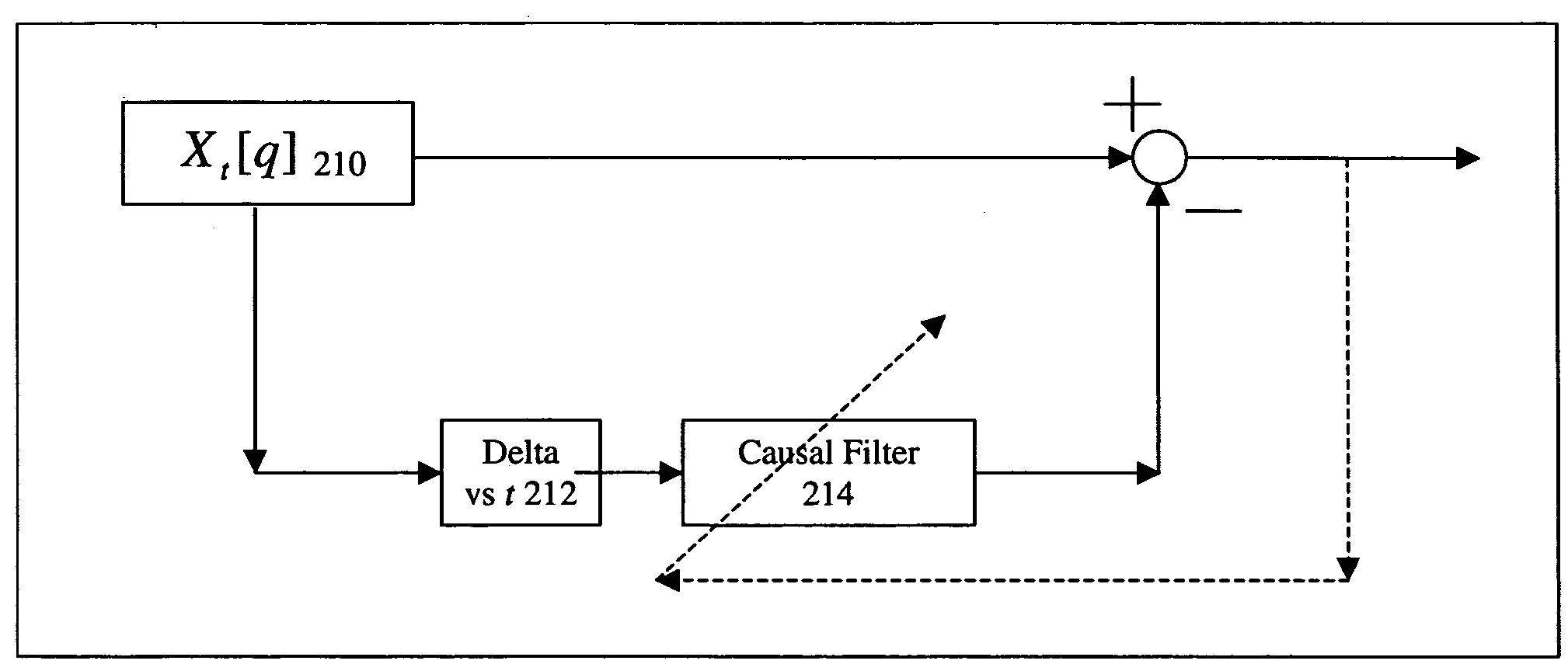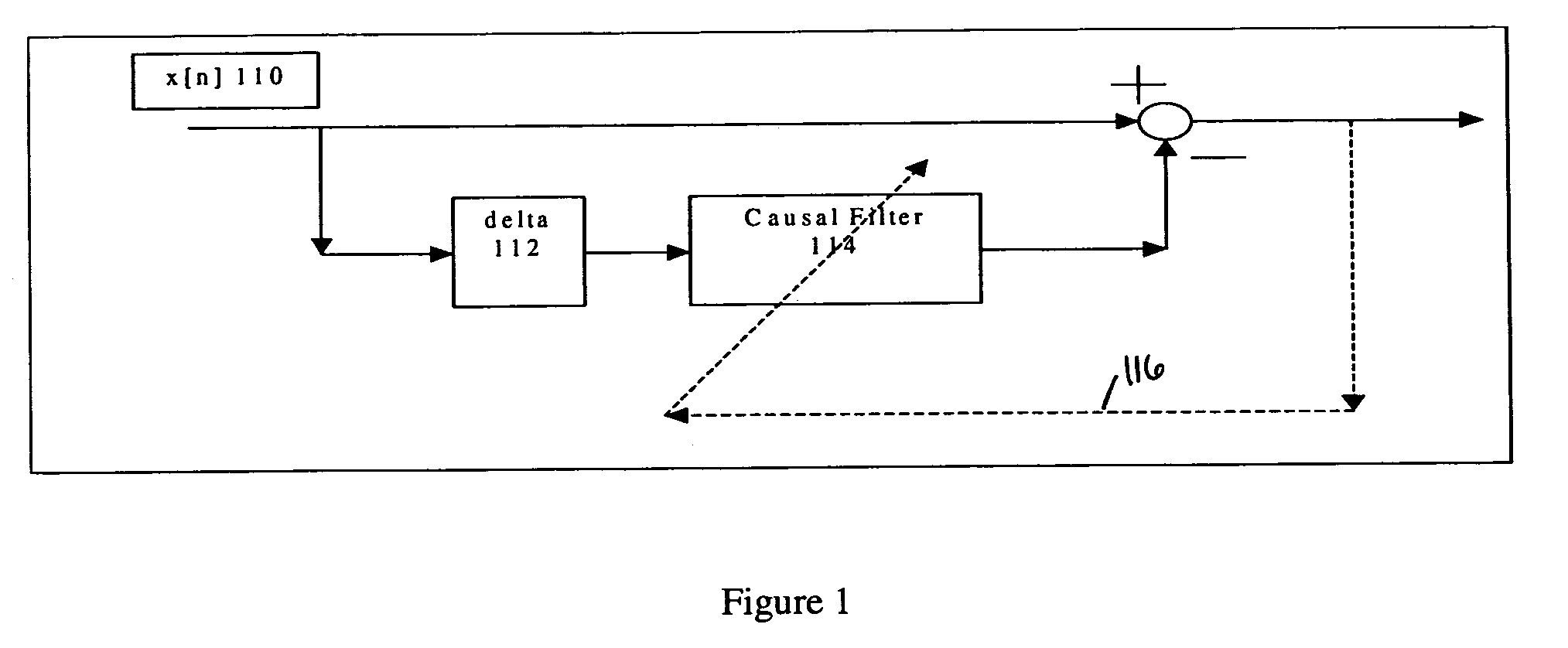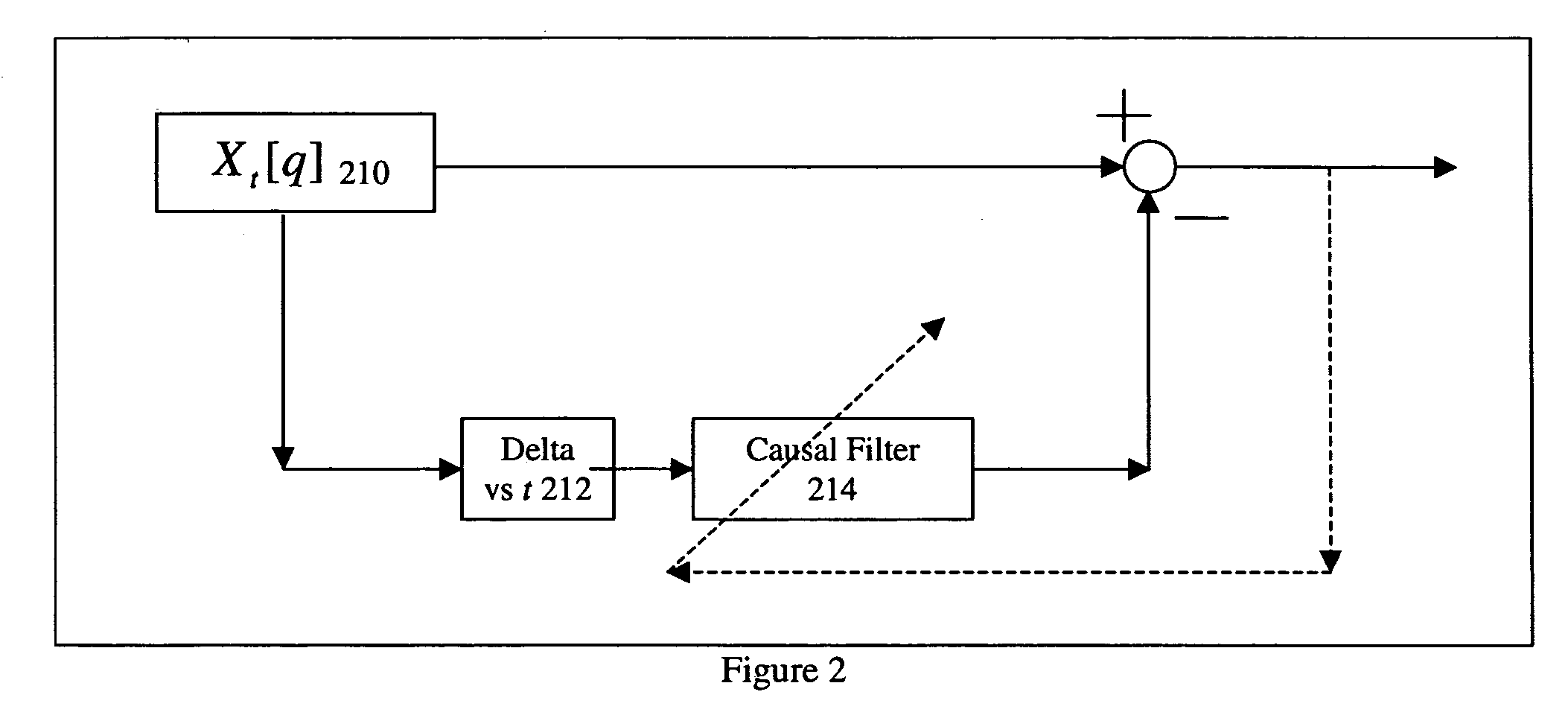Method and system for reducing interferences due to handshake tones
a technology of interference reduction and handshake, applied in the direction of line-faults/interference reduction, amplitude demodulation, pulse technique, etc., can solve the problem of significant signal to noise ratio drop, relative severe performance limitations placed on adsl implementation, and errors that may not be handled by an error correction system
- Summary
- Abstract
- Description
- Claims
- Application Information
AI Technical Summary
Benefits of technology
Problems solved by technology
Method used
Image
Examples
Embodiment Construction
[0027]The following description is intended to convey a thorough understanding of the inventions by providing a number of specific embodiments and details involving interference reduction applications. It is understood, however, that the inventions are not limited to these specific embodiments and details, which are exemplary only. It is further understood that one possessing ordinary skill in the art, in light of known systems and methods, would appreciate the use of the inventions for their intended purposes and benefits in any number of alternative embodiments, depending upon specific design and other needs.
[0028]An embodiment of the present inventions is directed to significantly reduce the NEXT and / or FEXT interferences due to handshake tones. For example, NEXT and / or FEXT interferences due to G.994.1 handshake tones, identified as, bins 7 and 9 for the Upstream channel and bins 12, 14 and 64 for the Downstream channel may be reduced. At the CO, NEXT Handshake Interferences int...
PUM
 Login to View More
Login to View More Abstract
Description
Claims
Application Information
 Login to View More
Login to View More - R&D
- Intellectual Property
- Life Sciences
- Materials
- Tech Scout
- Unparalleled Data Quality
- Higher Quality Content
- 60% Fewer Hallucinations
Browse by: Latest US Patents, China's latest patents, Technical Efficacy Thesaurus, Application Domain, Technology Topic, Popular Technical Reports.
© 2025 PatSnap. All rights reserved.Legal|Privacy policy|Modern Slavery Act Transparency Statement|Sitemap|About US| Contact US: help@patsnap.com



